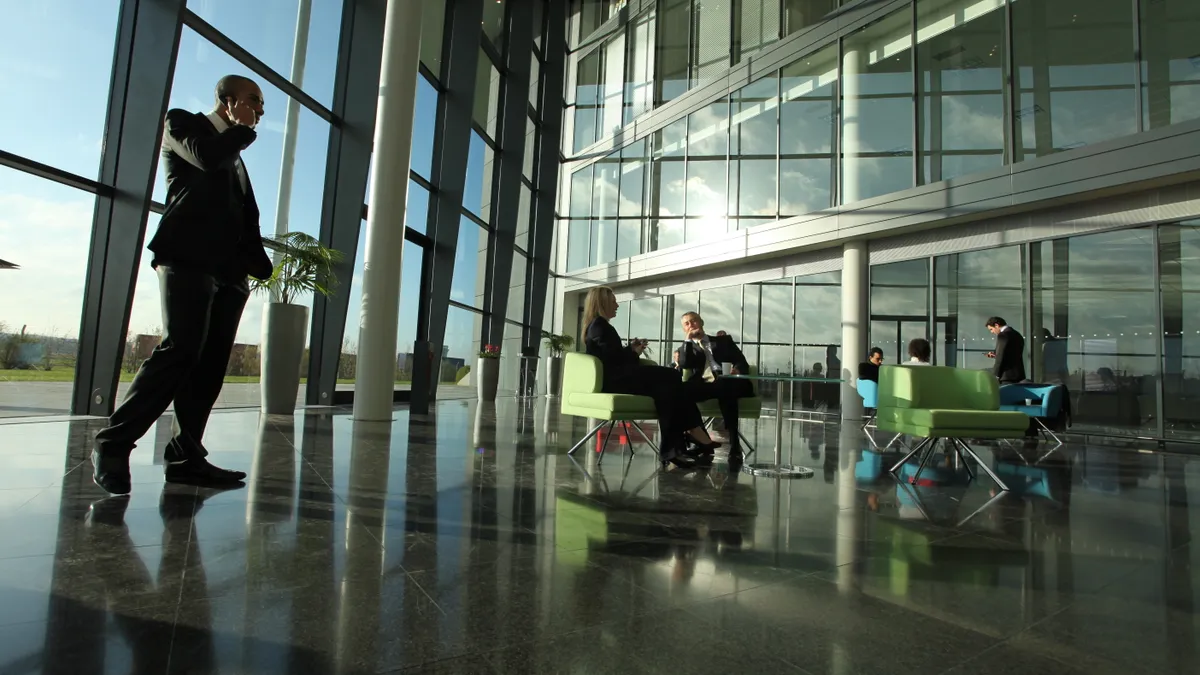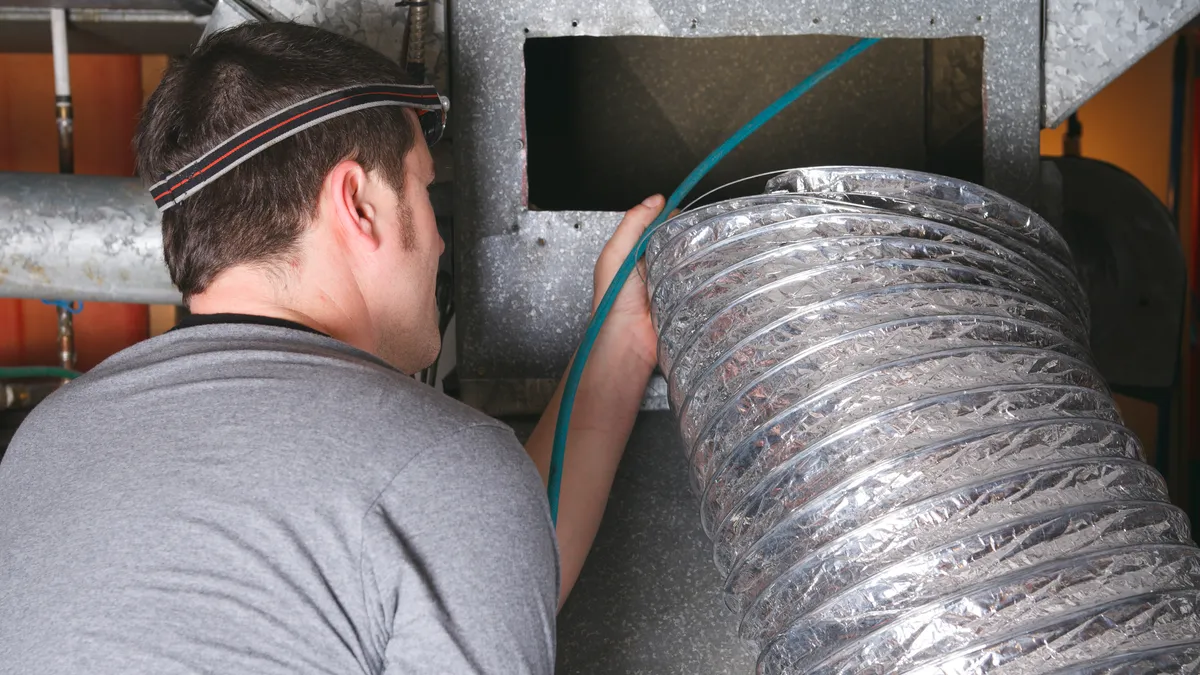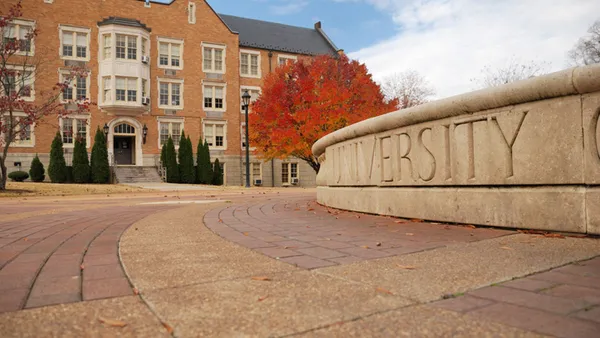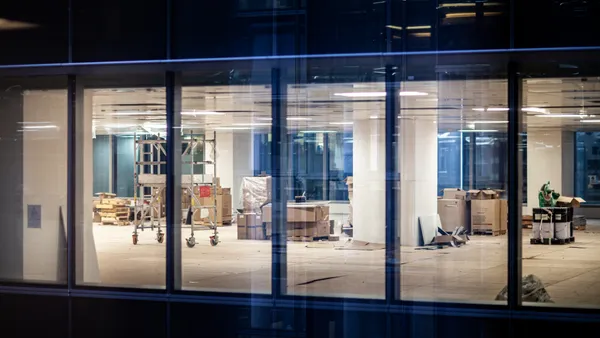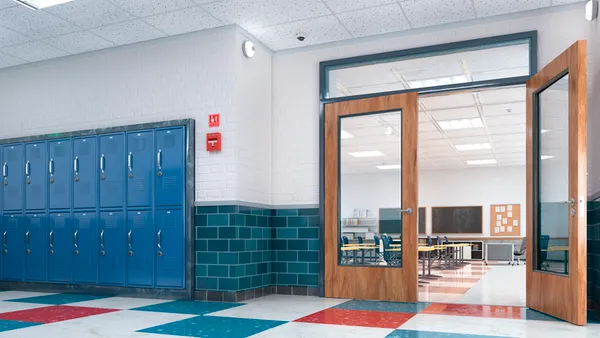Dive Brief:
- Commercial real estate owners and investors are more optimistic about budget increases in 2025, driving investments in data and technology for the coming year, according to Deloitte’s 2025 commercial real estate outlook.
- After two consecutive years of expected revenue declines, 88% of respondents anticipate revenue growth in 2025 compared with 60% who expected declines last year, according to a survey of over 880 global chief executives and their direct reports at major real estate owner and investor organizations across 13 countries. Only 7% reported further expense mitigation efforts, compared with nearly 40% in 2024.
- As organizations become more open to technology spending next year, investment should be methodical, incremental and intentional as it relates to “digital transformation,” Deloitte says. “Poorly executed technology projects may not only result in immediate technology cost write-off, but could also limit future technology investment allocations and create organizational ill will toward future efforts,” per the report.
Dive Insight:
While growth for 2025 will likely be slower than historical levels, the shift to rate cuts has boosted sentiment within the commercial real estate sector for the rest for 2024 and for next year, Deloitte says. A single rate cut is not expected to immediately resolve concerns about access to capital, however, per the report. Respondents named elevated interest rates, cyber risk, changes in tax policies and the cost of capital as the biggest macroeconomic factors that could impact financial performance over the next 12 to 18 months.
Despite these concerns, 2024 was likely the bottom of the current commercial real estate market cycle, with 68% of respondents expecting market conditions to improve in 2025 across areas such as cost of capital, capital availability, property prices, transaction activity, leasing activity, rental growth and vacancies, Deloitte says. In last year’s survey, only 27% of respondents anticipated improved conditions. Conversely, only 13% expect fundamental conditions to worsen in 2025, down from 44% last year, per the report.
Eighty-one percent identified data and technology as the area they are most likely to focus their spending for the coming year, according to the survey.
To navigate the ongoing market transformation, Deloitte provided actionable guidance for owners and operators to consider, such as working to create next-generation facilities that can be smart and greener, having a long-term growth horizon and preparing for active asset management. Owners and operators who can actively add value to commercial assets during the hold period “could position themselves for outsized returns over those who simply buy, hold and sell,” the report notes.
To achieve these efforts, commercial real estate owners and operators must first get a grasp on their inventory and space, according to Chris Barns, vice president of real property consulting at R&K Solutions.
“When you understand your inventory, how it's being utilized and the condition, you can plan for your capital projects, you can understand things like your deferred maintenance,” Barns said. “Now with technology, we can more easily predict when we ... need to replace a specific system. So it gives us a much greater capability to plan out our future budgets and make sure that we have the money set aside to maintain our facilities properly.”
Commercial real estate’s financial viability can also coexist with property climate resilience measures, Deloitte says. Building performance standards that prioritize retrofits and performance thresholds on specific timelines for existing buildings are gaining more acceptance in the U.S., the firm notes. Both BPS and building energy codes are becoming increasingly stringent, with six states and 41 U.S. cities pledging to implement BPS by the end of 2024, per the report. Thirteen U.S. cities have already passed BPS legislation, as of early 2024.
Retrofitting existing buildings produces less than half of the carbon emissions of redevelopment, Deloitte says. However, deep energy retrofits, which aim to improve a building’s energy efficiency by at least 50%, are currently implemented in less than 1% of buildings worldwide each year.
By increasing that implementation rate to 3% and scaling the depth of renovations, net-zero goals could be possible by 2050, the report says. Seventy-six percent of the respondents Deloitte surveyed said they plan to undertake deep energy retrofits over the next 12 to 18 months. The largest challenges to implementing more deep energy retrofits include financial constraints, building age and design limitations, according to Deloitte’s survey.
Despite the business case for sustainability strategies, there is a need to evaluate and balance short-term financial returns against long-term benefits, with 36% of respondents saying they currently have a more balanced approach than sustainability investment.
The success and impact of these initiatives, Deloitte says, “may hinge on how capital investments are prioritized for maximum impact and how quickly firms can transition from ‘brown to green’.”
“There's also a lot of savings in our more sustainable systems these days, and then going back to the conversation about leasing, being smart about how we lease out our spaces to be more flexible, create a better relationship with our tenants and to ensure that we understand their needs and what could be coming for them in the future,” Barns said. “So we can accommodate them better and keep those leases. I think all of that kind of builds up into much greater savings than than what you may be seeing right now.”



